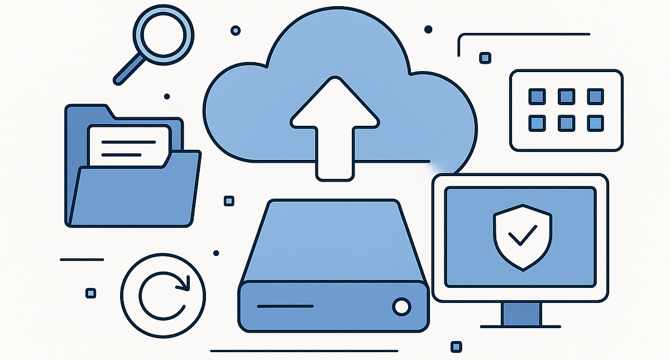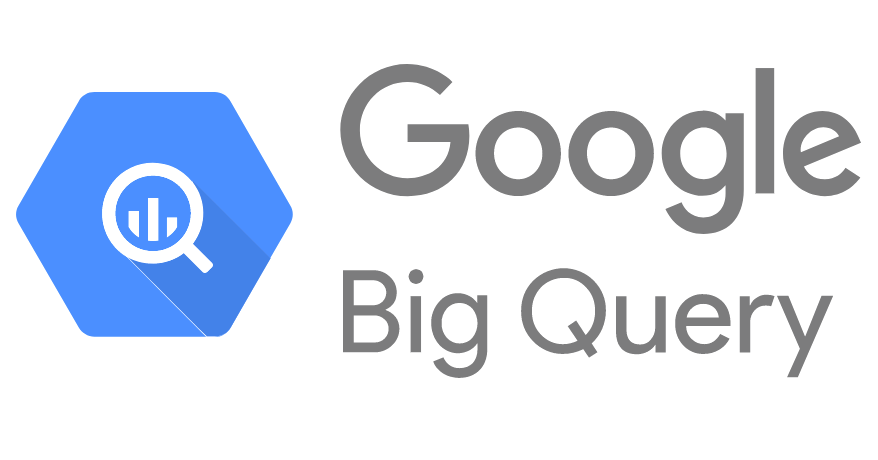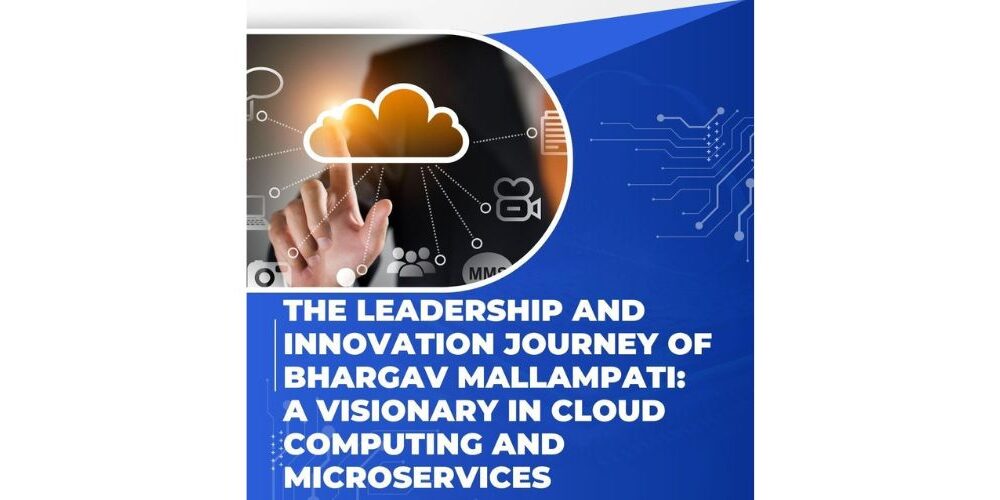Cloud News
Medium
176

Converting an existing Google Cloud Platform (GCP) project into Terraform
- Converting an existing Google Cloud Platform (GCP) project into Terraform aims to have infrastructure defined as code for consistent management, versioning, and deployment.
- Authentication in Terraform involves exporting GCP resources to HashiCorp Configuration Language (HCL) and utilizing commands like 'gcloud beta resource-config list-resource-types'.
- For bulk export, 'gcloud beta resource-config bulk-export' is recommended to export resources for Terraform.
- Optional steps include generating import scripts and Terraform module files for easier resource management.
- Executing the provided import script is necessary to import all resources into the Terraform state file.
- Review and refine the Terraform configuration after importing the resources to ensure proper setup.
- Configuring the Terraform backend with 'backend gcs' and specifying the bucket and prefix helps in managing the Terraform state effectively.
- Running 'terraform init' post-backend setup migrates the state to the remote backend for better management and collaboration.
- The process of converting a GCP project to Terraform enables disaster recovery, environment cloning, and collaborative development benefits for users.
- Utilizing Terraform for managing GCP infrastructure allows users to handle infrastructure changes and deployments more efficiently.
- This conversion also establishes infrastructure as code (IaC) for consistent management and deployment practices.
- Good Luck from Chet, highlighting the importance of understanding and using Terraform for GCP projects.
- Hashtags used in the post: #GoogleCloud, #Google, #GCP, #InfraAsCode
Read Full Article
10 Likes
Tech Radar
305

Image Credit: Tech Radar
Midjourney just dropped its first AI video model and Sora and Veo 3 should be worried
- Midjourney has introduced its first AI video model called V1, allowing users to animate images into short motion clips.
- The tool is affordable and could rival models like OpenAI's Sora and Google's Veo 3.
- Users can create five-second motion clips based on their images and extend them up to 20 seconds in five-second increments.
- The V1 model by Midjourney is available to its 20 million community members for beta testing.
- To create a video, users can generate or upload an image, choose motion settings, and let the AI animate it.
- Midjourney V1 emphasizes ease of use for independent artists and AI enthusiasts rather than competing with high-end video rendering models.
- The cost of producing a video with Midjourney is significantly cheaper compared to other AI video services in the market.
- Midjourney is currently facing legal challenges from major studios for alleged copyright infringement in training its models.
- The company plans to expand its video production capabilities with future updates, including full 3D rendering and immersive world exploration.
- While not a direct competitor with Sora and Veo in technical aspects, Midjourney aims to offer accessible and fun AI video tools.
- Advocates for Sora and Veo may want to monitor Midjourney's advancements, as the company plans to enhance its video capabilities.
- Midjourney's V1 model represents a step towards broader video production offerings in the future.
- The company hints at long-term plans for enhancing video creation and exploration experiences.
- Midjourney's focus remains on simplicity and affordability, catering to independent creators and AI hobbyists.
- Despite legal challenges, Midjourney continues to innovate its AI image and video generation tools.
Read Full Article
18 Likes
Dev
395

Image Credit: Dev
AWS Fundamentals: Cleanrooms
- AWS Clean Rooms is a service facilitating secure collaboration and analysis of data while preserving privacy.
- Key features include data isolation, selective data sharing, and integration with various AWS services.
- Benefits of using AWS Clean Rooms include fostering trust, compliance with regulations, and unlocking valuable insights.
- Practical use cases span across industries like marketing, healthcare, finance, retail, supply chain, and telecommunications.
- The architecture includes components like Clean Rooms, AWS Glue, Amazon S3, AWS Key Management Service, and IAM.
- Step-by-step guide for collaborating on marketing analytics using AWS Clean Rooms.
- Pricing is based on active Clean Rooms and data processed, with best practices for security and compliance outlined.
- Integration examples with AWS services, comparisons with similar services, common mistakes to avoid, and pros and cons noted.
- Best practices for production use include establishing clear data sharing agreements, monitoring usage and costs, and implementing strict security measures.
- AWS Clean Rooms is praised for enhancing data privacy and security while simplifying data sharing, with a complex setup and higher costs as drawbacks.
Read Full Article
23 Likes
Medium
339

Image Credit: Medium
The Best Cloud Storage Services of 2025-Based on Real Use
- The article highlights the best cloud storage services in 2025 for various use cases such as cost optimization, file sync, enterprise sharing, backups, migration, and more.
- reCost.io stands out for its in-depth analysis of storage footprint, automation through Autopilot lifecycle manager, and optimization capabilities, providing clarity on wasteful storage and potential cost savings.
- Dropbox is praised for its seamless performance across different platforms, fast file uploads, instant sync, easy sharing, versioning feature, and integrations with various third-party tools like Slack, Zoom, and Google Docs.
- Microsoft OneDrive for Business offers a seamless environment within the Microsoft ecosystem, enabling easy file access, real-time collaboration, granular admin controls, deep compliance tooling, and secure external sharing.
- Backblaze B2 Cloud Storage is recommended for its S3-compatible API making migrations easy, fair pricing structure, quick setup process, reliable service, and developer-friendly approach without unnecessary complexities.
- CloudM Migrate is described as invaluable for handling complex cross-platform moves with features like user mappings, metadata preservation, scheduling, throttling, detailed logs, security checks, and enterprise-ready compliance measures.
Read Full Article
20 Likes
Discover more
- Programming News
- Software News
- Web Design
- Devops News
- Open Source News
- Databases
- Product Management News
- Operating Systems News
- Agile Methodology News
- Computer Engineering
- Startup News
- Cryptocurrency News
- Technology News
- Blockchain News
- Data Science News
- AR News
- Apple News
- Cyber Security News
- Leadership News
- Gaming News
- Automobiles News
Medium
245

Image Credit: Medium
BigQuery time-partitioning: The hidden cost trap
- When faced with slow analytical queries in PostgreSQL, a team migrated analytics workloads to BigQuery using Airbyte for the initial migration.
- Although the migration to BigQuery initially showed impressive query performance improvements, the inability to define clustering or partitioning with Airbyte resulted in unoptimized data and increased costs.
- To address the issue, the team rebuilt the data ingestion pipeline to stream data directly into BigQuery and recreated tables with proper partitioning and clustering.
- Despite following best practices and implementing partitioning and clustering in BigQuery, the author discovered that partitioning didn't reduce the amount of data processed as expected.
- The author experimented with various ways to query time partitioned tables and discovered that certain functions like CAST() led to processing the entire table rather than pruning partitions.
- For TIMESTAMP data type, partition pruning worked effectively for all methods tested, including CAST().
- The author highlighted the importance of continuously monitoring and analyzing costly queries in BigQuery to identify inefficiencies that may not be explicitly warned about in documentation.
Read Full Article
14 Likes
TechBullion
30

Image Credit: TechBullion
The Leadership and Innovation Journey of Bhargav Mallampati: A Visionary in Cloud Computing and Microservices
- Bhargav Mallampati is a Lead Software Engineer and Cloud & Microservices Specialist known for his expertise in cloud computing and AI-driven solutions.
- He has demonstrated exceptional leadership in driving digital transformations for companies across various industries.
- His current role at AT&T involves developing innovative solutions impacting customer satisfaction and operational efficiency.
- Bhargav began his academic journey in India, earning a Bachelor’s degree in Electrical and Electronics Engineering and a Master’s degree in Electrical Engineering from the University of North Texas.
- His work on ultraviolet photodetectors led to multiple research publications pushing boundaries in nanomaterials and optoelectronics.
- Professionally, Bhargav has worked at Datametrics, Teradata, and currently serves as a Lead Software Engineer at AT&T.
- His role in transforming legacy systems into microservices-based architectures showcased his skills in optimizing operations.
- As a Senior Cloud Engineer at Teradata, he contributed to architecting multi-cloud systems for AI/ML integrations across AWS, Azure, and GCP.
- Bhargav's leadership style emphasizes collaboration, innovation, and designing scalable solutions.
- He has achieved notable results, such as increasing customer satisfaction and reducing cloud computing costs.
- Bhargav's academic contributions in optoelectronics and nanomaterials have bridged academic theory with technological applications.
- His ongoing work in cloud computing, AI, and microservices architecture solidifies his position as a key influencer in the tech industry.
- His vision and impact are set to shape the future of cloud infrastructure, AI integration, and digital transformation.
- Bhargav Mallampati remains a driving force in the evolution of the tech industry with his technical expertise, leadership, and vision.
- The article is eligible for web story generation as it highlights a visionary in cloud computing and microservices, detailing his journey, achievements, and impact.
Read Full Article
1 Like
Dev
245

Image Credit: Dev
AWS Fundamentals: Chatbot
- AWS Chatbot is a service that enables interaction with AWS resources through natural language processing on messaging platforms like Slack and Facebook Messenger.
- Key features include simplified interaction, integration with messaging platforms, automated responses, and customization.
- Use cases range from IT operations and customer support to project management and human resources.
- The architecture involves AWS Lambda functions, the chatbot service, and management tools like the AWS Management Console.
- Setting up involves enabling AWS Chatbot, creating Lambda functions, configuring behavior, and testing the chatbot.
- AWS Chatbot is free, but charges apply for underlying services like AWS Lambda.
- Security measures include IAM roles, policies, multi-factor authentication, and regular key rotation.
- Integration examples include S3, CloudWatch, and IAM for various monitoring and management tasks.
- Common mistakes include underestimating its potential and neglecting security practices.
- Pros include simplified interaction, messaging platform integration, automation, and customizability; cons include limited functionality and potential costs.
Read Full Article
14 Likes
Dev
357

Image Credit: Dev
Achieve Zero‑Downtime Deployment: Strategies and Best Practices
- In today's business landscape, zero-downtime deployment is crucial for maintaining services without interruptions during updates.
- Zero-downtime deployment (ZDD) is achievable and essential for high-traffic platforms and globally available systems.
- Challenges in traditional deployments include service unavailability, compatibility issues, and lack of rollback options.
- Strategies like blue-green deployments, canary releases, rolling updates, feature toggles, and database versioning are key for ZDD success.
- Supporting tools include CI/CD pipelines, container orchestration, service mesh, traffic management, feature flags, observability, rollback management, and deployment orchestration.
- Best practices for teams implementing ZDD involve testing in production, automating rollbacks, progressive delivery, immutable infrastructure, planning for schema changes, and setting deployment SLOs.
- Common pitfalls to avoid include incompatible database changes, lack of rollback strategies, and running different versions without traffic control.
- Real-world use cases show significant improvements in downtime reduction and deployment frequency through ZDD adoption.
- Starting zero-downtime deployment requires intentional design, observability focus, automation, and treating infrastructure as code.
- Platforms like Zopdev aid in orchestrating resilient deployments and automating traffic control for successful ZDD implementation.
- Zero-downtime deployment is a mix of strategic choices, observability, automation, and infra-as-code approaches.
Read Full Article
21 Likes
Medium
137

Image Credit: Medium
Blockchain and Data Sovereignty in Cloud Services: Empowering Users to Control Their Data in…
- The centralization of cloud storage by major tech giants has raised concerns about data sovereignty and control.
- Blockchain-based decentralized cloud services aim to empower users by allowing them to control data ownership and access through cryptographic technologies and decentralized infrastructure.
- Data sovereignty refers to governing data based on the laws and policies of the country where it resides, and blockchain aims to give users control over their data by eliminating central custodians.
- Blockchain enables data sovereignty in cloud services through decentralized storage architecture utilizing networks like IPFS, Filecoin, Arweave, and Sia.
- Self-sovereign identity (SSI) powered by blockchain technology allows users to control their digital identity without relying on third parties.
- Smart contracts on blockchain facilitate access governance, enabling automatic data permissions and audit trails for compliance and transparency.
- Real-world examples of blockchain-powered decentralized cloud services include Filecoin, Storj, Arweave, and Ocean Protocol.
- Challenges to adoption exist, but the future of data sovereignty lies in blockchain technologies that shift towards user-centric data governance.
- Blockchain-powered decentralized cloud services offer improved data control, privacy, transparency, resilience, and legal compliance for individuals and organizations.
Read Full Article
8 Likes
Dev
279

Image Credit: Dev
Top Cloud Platform Providers (2025)
- The top cloud platform providers for 2025 include Amazon Web Services (AWS), Microsoft Azure, and Google Cloud Platform (GCP) as the leading providers.
- Other notable cloud providers like IBM Cloud, Oracle Cloud Infrastructure (OCI), Alibaba Cloud, Salesforce Cloud Platform, DigitalOcean Cloud, and more offer specialized services catering to different needs.
- Emerging or specialized cloud providers such as Vultr Cloud, Render Cloud, Fly.io, Scaleway, Netlify, and others focus on specific areas like affordable VMs, modern alternatives to platforms like Heroku, and eco-friendly cloud services.
Read Full Article
16 Likes
Dev
184

Image Credit: Dev
GCP Fundamentals: Android Device Provisioning Partner API
- Google Cloud’s Android Device Provisioning Partner API automates the provisioning of Android devices at scale for device manufacturers, mobile carriers, and enterprise IT teams.
- Cloud-first enterprises benefit from automated provisioning to reduce deployment time, while IoT and mobile device fleets need zero-touch enrollment for security.
- Manufacturers like Samsung and LG, mobile carriers such as Verizon, and enterprise IT teams use the Android Device Provisioning Partner API for efficient device deployment.
- The API allows partners to automate zero-touch enrollment, custom app and policy deployment, and bulk configuration for large fleets of devices.
- Key components of the API include Device Registry, Claiming Interface, and Policy Engine to track device identifiers, assign devices, and enforce configuration profiles.
- Benefits of using the Android Device Provisioning Partner API include saving time with automated setups, ensuring consistency and compliance, and supporting scalability for thousands of devices.
- Real-world case studies demonstrate the API's use in retail chain deployments and telecom provider onboarding for tasks like pre-installing apps and automating SIM activations.
- Key features and capabilities include Batch Claiming, Policy Enforcement, Zero-Touch Enrollment, Custom Configurations, Audit Logging, and more for efficient device management.
- Practical use cases cover scenarios like enterprise device rollouts and education sector deployments using preloaded apps and geo-fencing restrictions.
- The API integrates with Google Cloud services like IAM, Logging, and BigQuery to streamline device provisioning workflows.
- Pricing for the API includes a free tier for the first 1,000 devices per month and costs $0.01 per device afterward.
- Security and compliance measures include IAM roles and support for HIPAA and ISO 27001 standards to ensure data protection and regulatory adherence.
- In conclusion, the Android Device Provisioning Partner API simplifies large-scale device deployment, enhancing security and efficiency for various organizations.
Read Full Article
11 Likes
Dev
253

Image Credit: Dev
Redis on AWS Made Easy: Compare, Choose, and Launch with ElastiCache for Free
- Redis, a popular in-memory database, is known for its speed and flexibility in various use cases like caching, session storage, and real-time analytics.
- AWS offers managed Redis services through ElastiCache and MemoryDB for simplified setup and management of in-memory data stores.
- ElastiCache supports Redis, Memcached, and Valkey deployment types, catering to different data storage needs and offering scalability options.
- MemoryDB combines Redis performance with features like high availability and durability, making it suitable for primary database usage.
- The article compares Redis OSS, Memcached, and Valkey, outlining their differences and common use cases for each in-memory data store.
- A step-by-step guide is provided to set up Redis OSS on AWS ElastiCache using CloudShell, making the process seamless and easy to follow.
- An example use case of tracking page views with Redis is demonstrated, showcasing practical application and integration with an EC2 instance.
- The conclusion emphasizes the importance of caching for scalability, highlights common real-world use cases, and recommends AWS managed services like ElastiCache for low latency and high throughput applications.
Read Full Article
15 Likes
Medium
296

Image Credit: Medium
Which Storage Should You Use? A Simple Guide for Your Website Files
- Website storage is crucial for a site's speed and reliability.
- Website files can be stored using local servers, cloud-based solutions, or Content Delivery Networks (CDNs).
- Choosing the right storage option is essential for optimal website performance.
- Local storage may be suitable for small websites catering to a specific area but may struggle with high demands.
- Cloud storage offers flexibility, backups, and scalability, with block storages for databases and object storages for media files.
- Content Delivery Networks (CDNs) distribute website resources to users based on location, improving load times.
- CDNs are beneficial for global websites and help enhance website performance.
- Using a CDN and selecting the right storage type based on your website's needs can help make your site more efficient.
- Local storage may provide more control, while cloud storage offers flexibility and scalability.
- Choosing the appropriate storage solution can help optimize website speed and user experience.
- To ensure a website stands out, utilizing a suitable cloud storage and CDN is recommended.
Read Full Article
17 Likes
Dev
21

Image Credit: Dev
Azure Fundamentals: Microsoft.AutonomousSystems
- Microsoft.AutonomousSystems is a cutting-edge cloud service by Azure that offers intelligent, self-managing cloud ecosystems to optimize operations.
- Autonomous cloud orchestration is crucial in an era where outages can cost enterprises significant amounts of money.
- Key components of Microsoft.AutonomousSystems include an Orchestration Engine, Policy Hub for governance, and Adaptive Learning using Azure Machine Learning.
- Core problems like over-provisioning, security gaps, and slow incident response are tackled effectively by AutonomousSystems.
- Use cases range from healthcare compliance to finance automation, showcasing the versatility and impact of the system.
- Features like predictive autoscaling, automated root-cause analysis, and autonomous Kubernetes remediation exemplify the capabilities of Microsoft.AutonomousSystems.
- The architecture integrates seamlessly with Azure services like Azure Monitor, Event Grid, and Logic Apps for efficient operations.
- Hands-on tutorials and pricing details are provided to facilitate understanding and adoption of AutonomousSystems.
- Microsoft.AutonomousSystems aims to transform cloud management by shifting from reactive to proactive strategies, emphasizing adaptability and resilience.
Read Full Article
1 Like
Dev
206

Image Credit: Dev
Building Remote MCP Servers with .NET and Azure Container Apps
- The article discusses creating remote MCP servers using .NET and Azure Container Apps to provide context to Large Language Models (LLMs) for interacting with data sources like the Australian Football League (AFL).
- MCP servers can use Streamable HTTP transport for client-server communication, enabling multiple client connections and streaming server messages using POST and GET requests with Server-Sent Events (SSE).
- The ModelContextProtocol.AspNetCore package in the MCP C# SDK assists in implementing MCP server capabilities, allowing for the deployment of MCP servers on Azure Container Apps.
- The article covers setting up MCP server endpoints, containerizing the MCP server with a Dockerfile, deploying to Azure Container Apps, and testing the remote MCP server using an MCP client in Visual Studio Code.
- Future articles will delve into security implementation for MCP servers and the ongoing work on Authorization support in the C# SDK.
- The author encourages exploring the full code sample on GitHub and invites inquiries about the topic on BlueSky.
Read Full Article
12 Likes
For uninterrupted reading, download the app